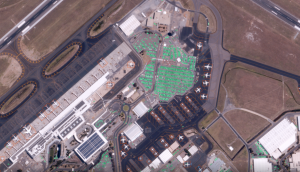Preparing for the National Defence Academy (NDA) and Combined Defence Services (CDS) exams is no small feat. These exams not only test your intellectual prowess but also your understanding of various subjects, including geography. Among the different branches of geography, physical geography holds a significant place. For aspirants of NDA/CDS, a solid grasp of physical geography concepts can be a game-changer. Here’s why:
1. Foundation for Understanding Tactical and Strategic Operations
In the military, knowledge of physical geography is crucial for planning and executing tactical and strategic operations. Understanding terrain types, weather patterns, and natural obstacles can aid in devising effective strategies. For instance, knowledge of mountainous terrain and its associated weather conditions can be critical for planning troop movements and logistics.
2. Enhances Map Reading and Navigation Skills
Map reading is an essential skill for any military officer. Physical geography provides the fundamental knowledge needed to interpret topographical maps accurately. Concepts like contour lines, elevation, river systems, and landforms are integral to understanding maps. This skill is vital not only in combat situations but also in rescue operations and patrolling.
3. Informed Decision-Making in Diverse Environments
Military personnel are often deployed in diverse and challenging environments. A sound understanding of physical geography enables officers to make informed decisions in various terrains, from deserts to jungles to arctic regions. Knowing the characteristics of different biomes, soil types, and climatic conditions can significantly impact operational efficiency and safety.
4. Environmental Awareness and Sustainability
Modern military operations are increasingly taking environmental considerations into account. Understanding physical geography helps in assessing the environmental impact of military activities and in promoting sustainable practices. Knowledge about ecosystems, natural resources, and environmental hazards is essential for responsible and sustainable military operations.
5. Preparation for Exam Sections on Geography
For NDA/CDS aspirants, geography is a critical part of the General Knowledge section. The exam often includes questions related to physical geography, such as the structure of the Earth, climatic zones, natural disasters, and major landforms. A thorough understanding of these topics not only helps in scoring well but also in developing a well-rounded knowledge base.
Key Physical Geography Concepts to Focus On
To excel in the NDA/CDS exams and beyond, focus on the following physical geography concepts:
- Earth’s Structure and Processes: Understand the layers of the Earth, plate tectonics, volcanic activity, and earthquake mechanisms.
- Landforms: Study various landforms such as mountains, valleys, plateaus, and plains, and their formation processes.
- Climatology: Learn about different climate zones, weather patterns, monsoons, and climatic phenomena like El Niño and La Niña.
- Hydrology: Gain knowledge of the water cycle, river systems, ocean currents, and the impact of water bodies on climate and human activities.
- Biogeography: Explore the distribution of flora and fauna, ecosystems, and biodiversity hotspots.
- Natural Disasters: Understand the causes and effects of natural disasters such as floods, tsunamis, hurricanes, and droughts.
Conclusion
In conclusion, mastering physical geography is not just about passing the NDA/CDS exams; it is about equipping yourself with knowledge that is fundamental to a successful military career. Physical geography concepts provide the tools needed to navigate, strategize, and operate effectively in diverse environments. For aspirants aiming to serve their nation, investing time in understanding physical geography is a step towards becoming a capable and informed officer. Embrace this knowledge, and it will serve you well both in your exams and in your future endeavors in the defense services.



















